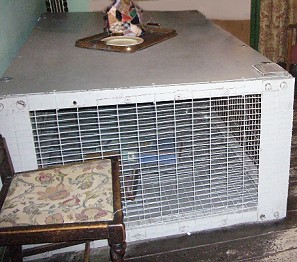| Air Raid Shelters | |
|
There were a varierty of Air Raid shelters used during the war often determined by the property at which you lived. The Boldon area is made up of a wide variety of property types, detached, semi detached, terraced with the most popular type of shelter being the Anderson Shelter. etc if your property did not have land attached for which to build an Anderson shelter then other options could be a local public building or a Morrison shelter. The Boldon Colliery area around Charles and Arnold Street were terraced houses with no front gardens and only a back yard. Houses nearer the pit had a mixture of front gardens but back yards.New properties at the time built around the early thirties including Addison Road in West Boldon and The New Road Boldon Newtown Area were built as part of a program in Boldon to get away from shared housing (more than one family in a shared terrace) these new properties had both front and back gardens although may have been small in size. East and West Bodlon also had a number of larger Semi detached and detached properties. It maybe possible that today some of these shelters may still exists if not then maybe some foundations.
|

|
A basic Anderson shelter seen on the left was a hole dug in the ground in which was placed a corrugated iron structure. The earth was then used to cover the sides and roof of the shelter. It was a very basic solution but stood up quite well against anything but a direct hit.
|
|
The Morrison Shelter on the right was designed to be used in the home where building of an outside shelter was not possible. It was a basic steel cage construction. As you can see from the picture it is not much bigger than a dog cage so must have been pretty unpleasant to be inside. The downside to this shelter wassif they house was damaged then the occuppants could be trapped inside the cage amongst the rubble.
|

|
|
For those who did not have access to a shelter or were caught unawares during a bombing, then the governments guidlines were to shelter under a strong table (some people had strong metal tables for just this purpose), under the stairs or in a doorway. The biggest threat after surviving the initial blast was the incendiary bomb which was designed to cause fire as such a lot of the civil defence personnel had fire fighting equipment such as stirrup pumps. This was not without risk with several of the civilian causalties in Boldon were caused by near by blasts from HE bombs whilst people were out fighting Incendiary fires.
|



